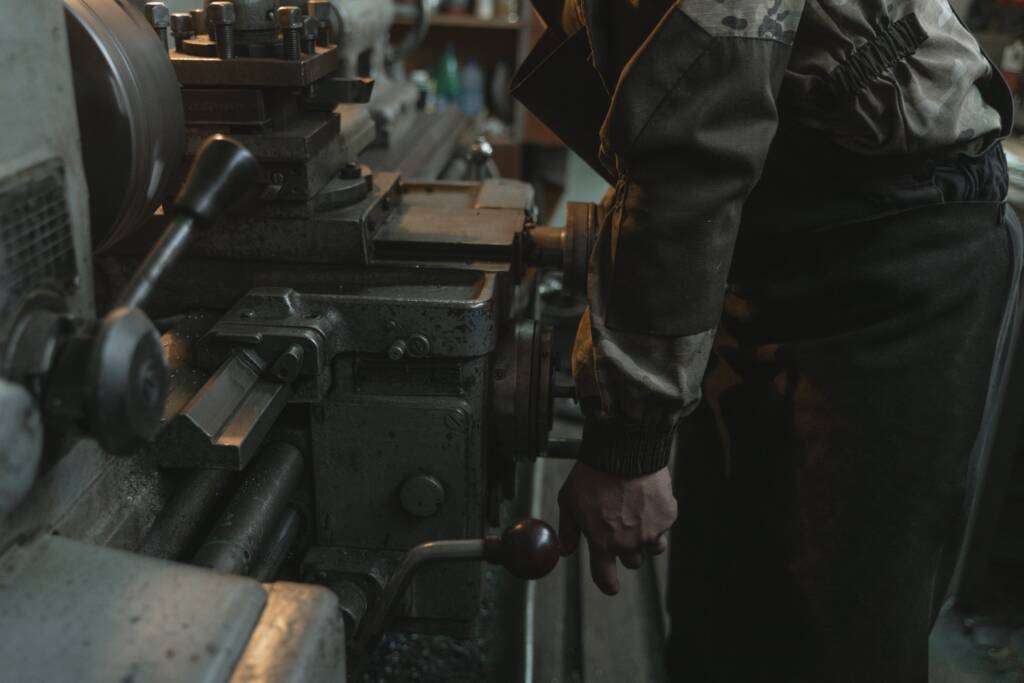Are you ready to embark on a journey through the fascinating world of lathes in manufacturing? Brace yourself for an exploration that will unveil the secrets behind these powerful machines, their unrivaled precision, and their indispensable role in shaping our modern society.
Join us as we delve into the artistry and craftsmanship behind lathes, where raw materials are transformed into functional works of art.
Prepare to be amazed by the intricate dance between man and machine as we uncover how lathes have revolutionized industries across the globe, turning the tide toward a future defined by innovation and excellence. So buckle up – it’s time to discover why lathes truly stand at the forefront of manufacturing marvels!
Importance of Lathes in Manufacturing
Lathes have been around for centuries and have played a significant role in the development of manufacturing processes. From ancient civilizations to modern industries, lathes have been essential for shaping materials into usable products. Even with technological advancements, lathes continue to hold a crucial position in manufacturing.
One of the primary reasons for the importance of lathes in manufacturing is their versatility. Lathes can be used to create a wide range of products, from simple bolts and screws to intricate parts for machinery.
They can cut various materials such as wood, metal, plastics, and ceramics precisely and accurately. This makes them an indispensable tool in many industries, including automotive, aerospace, construction, and medical.
Types of Lathes Used in Different Industries
Lathes are versatile machines that have been used in manufacturing industries for centuries. They play a crucial role in shaping and machining materials such as wood, metal, and plastic into various forms.
Over the years, different types of lathes have been developed to suit the specific needs of different industries. This section will discuss the most commonly used types of lathes in various industries.
- Engine Lathes:
Engine lathes are among the oldest and most basic lathes still in use today. They are primarily used for general-purpose turning operations such as cutting, drilling, threading, and facing. An electric motor powers these lathes and can handle various workpiece sizes and shapes. Engine lathes are widely used in automotive, aerospace, and other heavy-duty industries.
- CNC Lathes:
CNC (Computer Numerical Control) lathes use computer programming to control their movements instead of manual adjustments by an operator. This allows for more precise and complex cutting operations with consistent results. CNC lathes can produce intricate designs on various materials at high speeds with greater accuracy than traditional engine lathes.
How Lathes Work: A Step-by-Step Guide?
Lathes are versatile and essential tools in the manufacturing industry, used for shaping and finishing various materials such as metal, wood, and plastic.

These machines have been around since ancient times, with their basic concept remaining the same – to rotate a workpiece against a cutting tool to create precise shapes and designs. This section will delve into how lathes work by providing a step-by-step guide.
Step 1: Set up the Lathe
The first step in using a lathe is to set it up properly. This includes adjusting the rotation speed, selecting the appropriate cutting tool, and positioning the workpiece securely on the spindle. The rotation speed depends on the material being worked on and can be adjusted using a control panel or manually with belts or gears.
Choosing the right cutting tool is crucial as it determines the quality of the surface finish and the accuracy of cuts. Once everything is set up correctly, safety measures must be taken before starting the machine.
Step 2: Turning On the Machine
After setting up, please turn on the lathe by flipping its power switch. Most modern lathes have an electric motor that drives its main spindle, while older models may require manual turning of a handwheel or foot pedal to start rotating.
It is essential to ensure that all parts move smoothly without any unusual vibrations before proceeding.
Advancements in Lathe Technology
The evolution of lathe technology has played a crucial role in shaping the modern manufacturing industry. From simple hand-operated lathes to advanced computer numerical control (CNC) machines, advancements in lathe technology have greatly improved efficiency, precision, and production capabilities.
One significant advancement in lathe technology is the development of CNC lathes. These machines are equipped with computer programs that control all aspects of the machining process, such as spindle speed, tool movement, and material feed.
This allows for highly precise and consistent cuts, reducing human error and increasing productivity. In addition, CNC lathes can work continuously without manual intervention, making them ideal for mass production.
Benefits of Using Lathes in Manufacturing Processes
Lathes have been a fundamental tool in the manufacturing industry for centuries, and their importance continues to grow as technology advances.
These versatile machines shape raw materials into precise and complex components for various automotive, aerospace, and medical industries. This section will discuss the numerous benefits of using lathes in manufacturing processes.
- High Precision and Accuracy:
One of the biggest advantages of using lathes is their ability to produce highly precise and accurate parts. This is crucial in industries where even the slightest deviation can lead to significant consequences. Lathes use rotating cutting tools to remove material from a workpiece, allowing for precise shaping and sizing according to specific design requirements.
- Versatility:
Lathes are incredibly versatile machines used for various operations, such as turning, drilling, facing, knurling, threading, and more. This versatility makes them an essential tool in any manufacturing process where different components must be produced efficiently.
Challenges and Limitations of Using Lathes
As with any tool, using lathes in manufacturing comes with its own set of challenges and limitations. While they are versatile and widely used in various industries, certain factors can limit their effectiveness and pose operator challenges.
In this section, we will delve into some common challenges and limitations of using lathes and explore ways to overcome them.
- Size Limitations:
One of the main limitations of using lathes is their size capacity. Lathes come in different sizes, ranging from small benchtop models to large industrial ones. The size of the lathe determines the maximum length and diameter of the workpiece it can accommodate. This means that larger workpieces may not be able to fit on smaller lathes, limiting the range of projects that can be completed on them.
To overcome this limitation, manufacturers often invest in multiple lathes of different sizes to cater to a wider range of workpieces.
Additionally, some modern lathes come with adjustable beds or extensions that can increase their capacity, allowing larger workpieces to be accommodated.
- Material Limitations:
Another challenge when using lathes is working with certain materials such as hardened steel or exotic alloys like titanium or Inconel. These materials are notoriously difficult to machine due to their high strength and toughness, which strains the cutting tools and may cause premature wear.
Future of Lathes in Manufacturing Industry
The future of lathes in the manufacturing industry constantly evolves, with new advancements and technologies being introduced daily. Lathes have been a crucial tool in manufacturing for centuries, and they continue to play a vital role in shaping the products we use in our daily lives.
One of the most significant changes in the future of lathes is their integration with advanced computer numerical control (CNC) technology. CNC lathes can perform complex operations with precision and speed, making them ideal for high-volume production.
These machines can be programmed to perform various tasks, from simple turning and facing to intricate drilling, threading, and milling operations.

